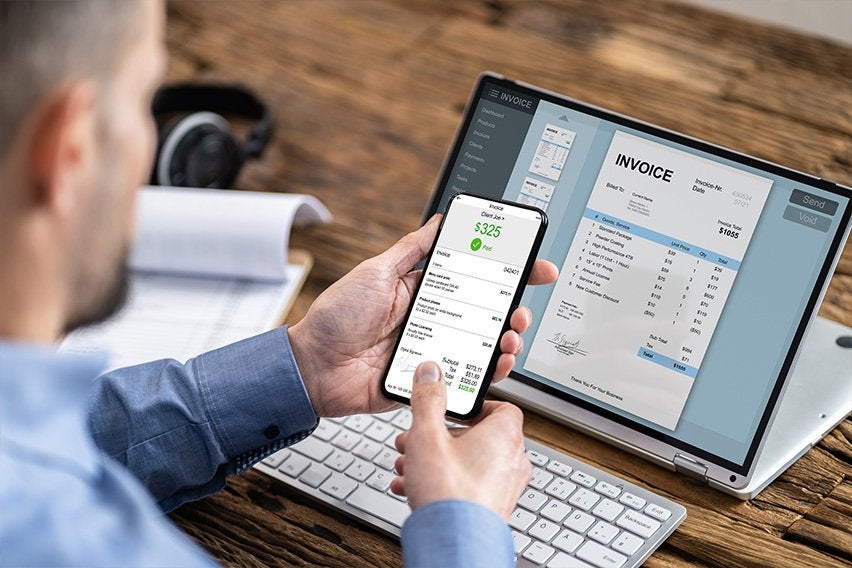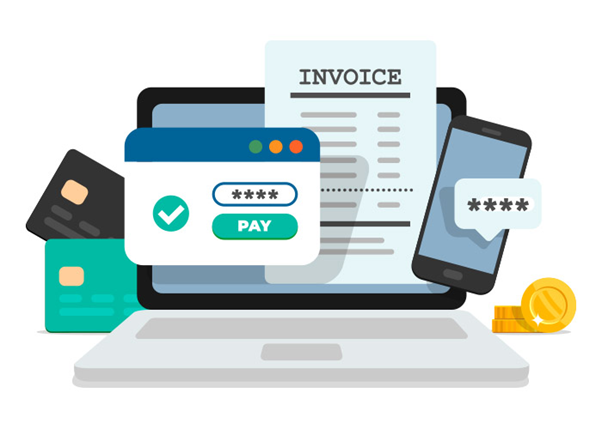Managing inventory is a critical aspect of running a successful Ecommerce business or businesses. It involves carefully monitoring and controlling stock levels to meet customer demand efficiently while avoiding unnecessary expenses on warehousing and storage.
The key lies in selecting the right inventory management software, which plays a pivotal role in optimizing supply chain operations, preventing costly stockouts, and facilitating swift, accurate order fulfillment.
This article goes beyond the importance of inventory management and delves into an evaluation of several top-notch inventory management systems. The goal is to assist you in choosing the most suitable software options for your Ecommerce ventures.
It provides an in-depth exploration of the core features and advantages offered by each platform, including crucial details such as pricing and integrations. By the end of the read, you’ll be equipped with insights and recommendations to guide you in selecting the optimal solution for your online store.
1. Zoho Inventory
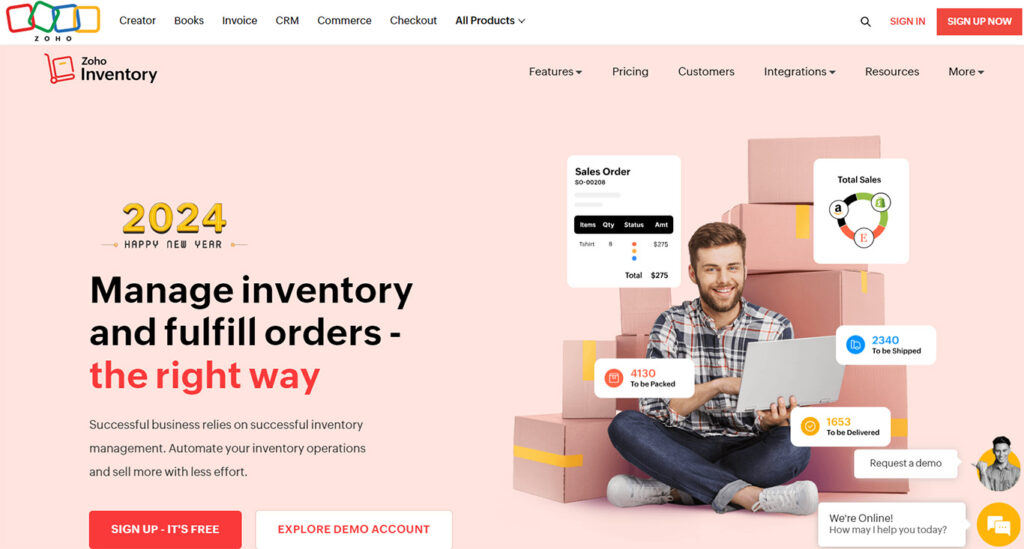
9.8/10
Zoho Inventory stands out for its competitive pricing and tight integration within Zoho’s software ecosystem, ensuring a seamless experience for you.
- Provides an affordable pricing structure starting at $29 per month, catering to businesses with diverse budgetary needs.
- Has comprehensive functionality for both sale and purchase orders.
- Ensures support for tracking inventory across multiple warehouses.
- Limits to FIFO costing method, restricting options for businesses with different inventory valuation needs.
- Focuses shipping and e-commerce integrations primarily on countries outside the United States
- Struggle with absence of Bill of Materials (BOM), pick lists, or bin ID support.
- Lacks forecasting capabilities, potentially limiting advanced planning for businesses.
Zoho Inventory employs a cost calculation based on the number of users, orders, and warehouses, offering an affordable pricing model starting at $29 per month for up to 10 users, 100 online orders, and two warehouses. Zoho Inventory adopts a standalone approach, often requiring integration, especially with accounting systems, and potentially with point-of-sale (POS), asset tracking, and production management systems.
Zoho Inventory’s free version is suitable for users with limited inventory requirements, providing 20 online and 20 offline orders per month, along with 20 shipping labels and three e-commerce integrations. The platform goes beyond basic inventory tracking, supporting multiple warehouses, multiple currencies, and drop shipments.
2. Cin7 Core

9.5/10
Cin7 Core provides robust inventory optimization and order automation tools tailored for you whether you’re a seller or manufacturer. The mobile app, automation capabilities, and real-time visibility into stock data will pique your interest. Enjoy a 14-day free trial of this comprehensive system, starting from $349/month.
It delivers connected inventory management, automated workflows, and seamless integrations with 3PL and EDI systems. The package also includes additional features like point of sale, B2B portals, and robust reporting, offering a holistic solution for businesses. The B2B portals eliminate manual order entry and error resolution for your team.
Cin7 Core offers centralized tracking and control of your supply chain operations, from purchasing to production to order fulfillment.
Key features include purchase order automation, robust reporting, and analytics to gain data-driven insights. With integrations spanning accounting software and platforms like Shopify, Quickbooks, Amazon, and Xero, it ensures seamless connectivity. Moreover, the system provides developer APIs for crafting custom integrations with your existing tech stack. Scale effortlessly with available 3PL and EDI system integrations when needed.
3. Linnworks
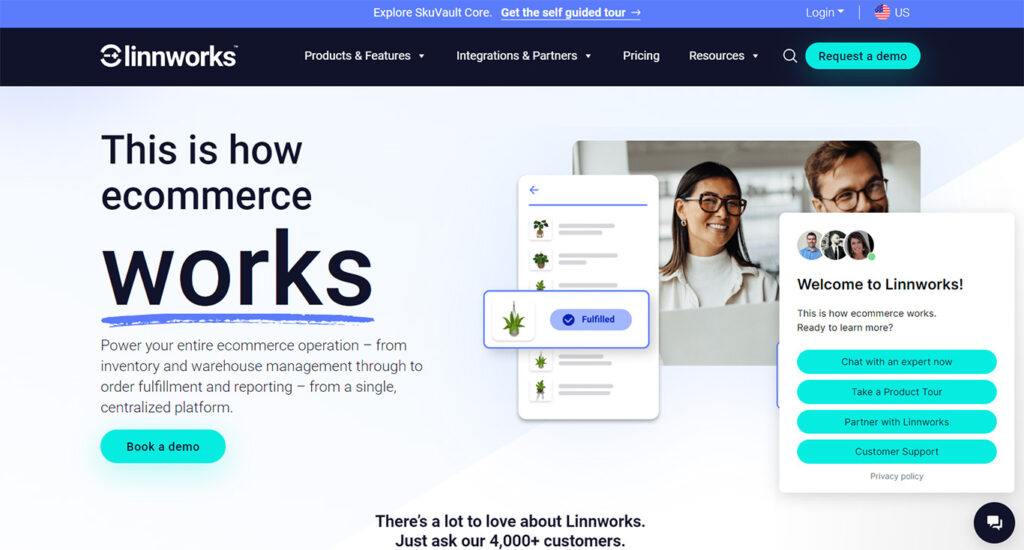
9.4/10
In one sentence, Linnworks stands out for its multichannel listing and order management capabilities, enabling automated inventory updates across channels like eBay, Amazon, and Shopify!
This software centralizes your inventory data and listings across all integrated sales channels. You can sync stock levels, product information, prices, and more. Core features include inventory allocation between channels, usage-based stock forecasting, and shipping management. Explore a free demo of this service, and discover its capabilities before making a commitment. Pricing details are available upon request, allowing you to tailor the cost based on your specific needs and requirements.
4. SkuVault
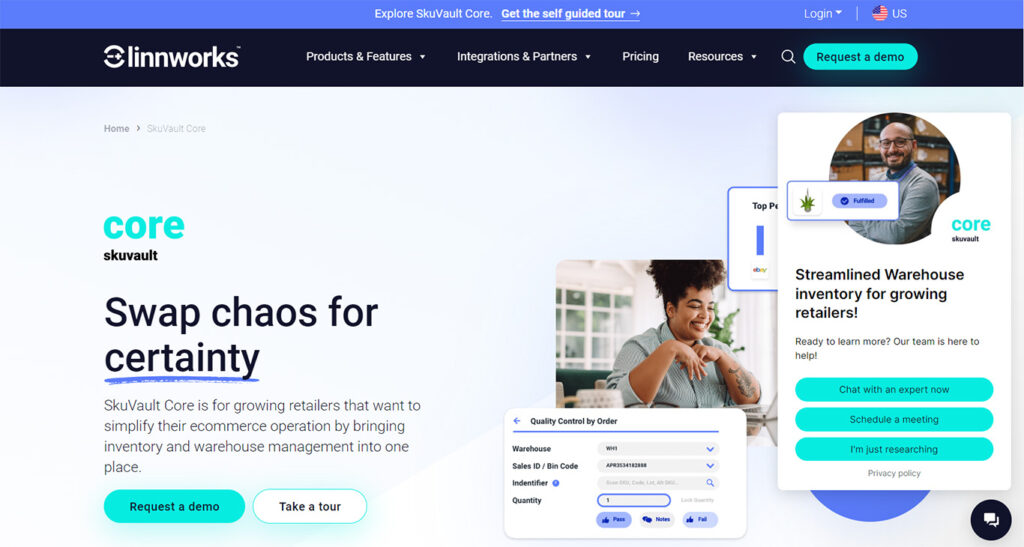
9.1/10
SkuVault provides top-notch inventory optimization through its actionable restocking recommendations based on historical and real-time sales data with great features for warehouse management. Take advantage of a free demo to experience the features of this service before committing. Pricing starts from $359/month, providing flexibility to choose a plan that aligns with your specific needs and budget.
SkuVault gives you an end-to-end view of your inventory lifecycle, from purchasing to expiry tracking. You can gain data-driven insights for smarter inventory planning through its forecasting and analytics tools. The software also supports multi-channel selling, order processing workflows, barcode scanning, and more.
5. ShipBob
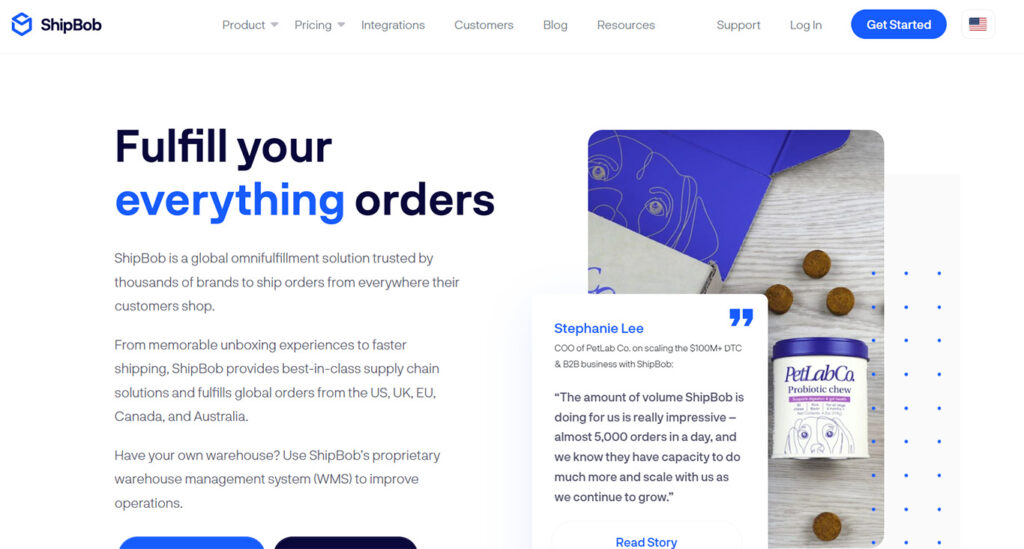
9/10
QuickBooks Commerce, developed by Intuit Inc., the same company behind MailChimp, TurboTax, Mint, and Credit Karma, is renowned for its comprehensive approach to aiding e-commerce businesses in managing inventory, orders, accounting, and reporting processes. While seamlessly integrating with QuickBooks online, it might not be universally suitable for all e-commerce companies.
Uncertain about the product? Test it fully with the 30-day trial of the simple start plan. QuickBooks Online offers four pricing tiers with a 50% discount for the initial three months. The simple start plan, initially $9/month, covers basic business accounting needs like income monitoring, invoice capability, tax deductions, receipt capture, and mileage tracking.
Opt for the essential plan at $16.50/month (first three months) and $45/month thereafter, which accommodates up to three users. It enhances bill management and allows employee time tracking for accurate billing. The plus plan, $25.50/month (initial three months) and $85/month afterward, caters to up to five users, offering inventory management and profitability projection through forecasting reports.
For advanced features, the advanced plan is priced at $60/month (first three months) and $200/month thereafter. QuickBooks Online is ideal for small businesses simplifying customer invoicing and integrating it seamlessly into the general ledger. The platform allows customization, ensuring you only utilize the features essential to your needs.
Overview of Inventory Management Systems

Inventory management software provides centralized control and visibility over your product stock levels and movements to help ecommerce businesses save time and costs. These systems connect your sales channels, warehouses, shipping providers, and other supply chain entities to create an interconnected flow of inventory data.
Core capabilities include real-time inventory tracking, supply and demand forecasting, order management workflows, analytics dashboards, and integrating with accounting platforms. Leading solutions enable automated processes for replenishment, picking, and fulfillment based on configurable rules for inventory optimization.
How to Choose Inventory Management Software
Pros and Cons of Inventory Management Systems
Pros
Cons
What to Watch Out For
Pro Tips
Recap
Inventory management software gives ecommerce businesses enhanced coordination and insights for product ordering, storage, picking, shipping, returns, and more. Evaluating your workflows, volumes, budgets, and other criteria will determine the best solution.
Effectively managing inventory is crucial for Ecommerce success, ensuring timely fulfillment without unnecessary costs.
Key considerations include core features, scalability, integrations, ease of use, and customer support. Pros include optimized inventory and automated processes, while cons involve initial costs and staff training. Beware of unexpected charges, integration issues, and plan for sufficient time investment during implementation.
Pro tips recommend stakeholder involvement, early data tracking, trial usage, phased implementation, realistic timelines, and comprehensive training and support.
Discuss your business requirements with an inventory management software provider to find the right technology for managing your supply chain from end to end.











